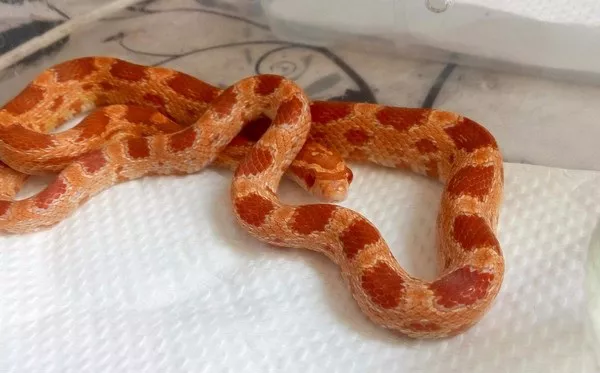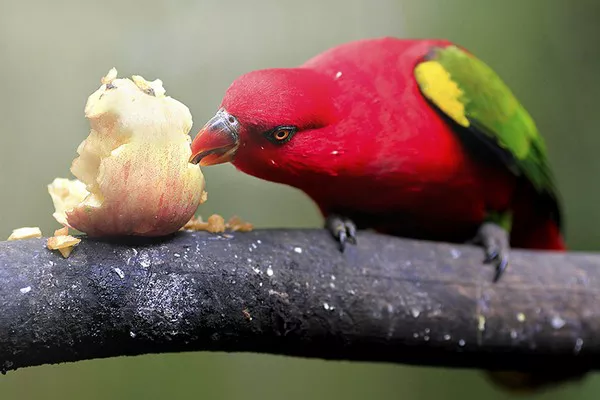Corn snakes (Pantherophis guttatus) are among the most popular pet snakes, loved for their striking colors, docile nature, and relatively easy care. However, when it comes to their habitat preferences, a common question arises: are corn snakes arboreal? This article explores the habitat, behavior, and care requirements of corn snakes, delving into whether these beautiful reptiles are truly arboreal creatures or if they prefer a more terrestrial lifestyle.
Understanding Arboreal Behavior
Before we dive into the specifics of corn snakes, let’s clarify what “arboreal” means. Arboreal animals are those that primarily live in trees. They have adaptations that allow them to climb and navigate the vertical environment of the forest canopy. Common arboreal animals include various species of monkeys, birds, and reptiles like tree pythons. These creatures often have specialized physical traits, such as long limbs, prehensile tails, or specialized claws, that help them move efficiently through trees.
In contrast, terrestrial animals primarily inhabit the ground. They may climb occasionally but do not rely on trees for their survival. Many snakes, including corn snakes, fall into this category. Understanding these distinctions is essential when examining the natural habitat of corn snakes.
The Natural Habitat of Corn Snakes
Corn snakes are native to North America, primarily found in the eastern United States. Their range extends from New Jersey to Florida and as far west as Louisiana and Texas. Corn snakes thrive in a variety of environments, including:
Grasslands: Open fields and meadows provide ample cover for hunting and basking.
Forests: Deciduous forests offer shelter and a diverse range of prey.
Farms and Agricultural Areas: Corn snakes often inhabit agricultural lands, where they can find rodents and other small prey.
Behavior and Adaptations
Corn snakes are primarily terrestrial, meaning they spend most of their time on the ground rather than in trees. However, they are excellent climbers and can ascend trees or other vertical structures when necessary. This climbing ability helps them escape predators and search for prey.
Some characteristics of corn snakes that support their terrestrial lifestyle include:
Body Structure: Corn snakes have elongated, muscular bodies that are well-suited for moving through grass, underbrush, and rocky terrain.
Coloration and Camouflage: Their natural coloration, typically a mix of orange, yellow, and brown, allows them to blend into their surroundings, providing effective camouflage against predators and prey alike.
While corn snakes can climb, their preference leans towards terrestrial habitats. They are often found in leaf litter, under rocks, or in burrows, seeking shelter and warmth.
Arboreal vs. Terrestrial Snakes
To further understand the distinction between arboreal and terrestrial snakes, let’s look at some examples of both categories:
Arboreal Snakes
Green Tree Python (Morelia viridis): These snakes are adapted for life in the trees, featuring prehensile tails and a distinctive green coloration that helps them blend into their leafy surroundings.
Emerald Tree Boa (Corallus caninus): Another climbing specialist, the emerald tree boa has a long, slender body and can be found hanging from branches in its tropical rainforest habitat.
Terrestrial Snakes
Eastern Garter Snake (Thamnophis sirtalis): Garter snakes thrive in a variety of environments but primarily inhabit grasslands, forests, and wetlands.
Western Rat Snake (Pantherophis obsoletus): Similar to corn snakes, rat snakes are primarily terrestrial, although they can climb trees to hunt for birds.
This comparison highlights the adaptability of snakes to their respective habitats, showcasing the diversity in their physical characteristics and behaviors.
Are Corn Snakes Arboreal?
In short, corn snakes are not considered arboreal. While they can climb trees, they do not rely on an arboreal lifestyle as a primary means of survival. Instead, they are predominantly terrestrial snakes that thrive on the ground. Their climbing abilities are more of an adaptation for escaping danger or hunting prey rather than a necessity for their everyday life.
The Climbing Capability of Corn Snakes
Corn snakes can climb, and they do so with ease when the opportunity arises. Their strong, flexible bodies allow them to ascend trees, fences, and even furniture in captivity. However, they do not prefer high elevations as their primary habitat. When climbing, corn snakes often search for:
Prey: Young corn snakes may climb to hunt birds or small mammals that are nesting or roosting in trees.
Shelter: They may also climb to find refuge from predators, such as hawks or larger snakes.
The Role of Climbing in Corn Snake Behavior
Although corn snakes are primarily terrestrial, their climbing behavior is an essential aspect of their survival strategy. When a corn snake climbs, it is usually for one of the following reasons:
Avoiding Predators: By climbing, corn snakes can evade ground-based predators, which may include birds of prey and larger snakes.
Seeking Food: Some prey, particularly birds and small mammals, may be found in trees, making climbing advantageous for hunting.
Thermoregulation: Snakes are ectothermic (cold-blooded), meaning they rely on external heat sources to regulate their body temperature. Climbing may help them bask in the sun or find warmer spots.
Habitat Requirements for Pet Corn Snakes
If you’re considering keeping a corn snake as a pet, it’s essential to understand their habitat requirements to ensure they thrive in captivity. While corn snakes do not need an arboreal setup, providing them with an environment that mimics their natural habitat is crucial.
Enclosure Size and Type
When setting up a habitat for your corn snake, consider the following:
Enclosure Size: A 20-gallon tank is sufficient for juvenile corn snakes, while adults may require a 40-gallon or larger enclosure. The tank should provide ample floor space for exploration and hiding.
Type of Enclosure: Glass tanks are popular for visibility, but plastic tubs can also work well. Ensure proper ventilation and security, as corn snakes are known escape artists.
Substrate
Choose a substrate that is safe and easy to clean. Popular options include:
Aspen Shavings: Absorbent and easy to spot clean, aspen shavings provide a natural feel.
Coconut Fiber: This substrate offers excellent moisture retention, which can be beneficial for humidity levels.
Hiding Spots and Climbing Opportunities
While corn snakes prefer terrestrial habitats, they still enjoy having a variety of hiding spots and climbing opportunities:
Hides: Provide at least two hiding spots—one on the warm side of the enclosure and one on the cool side—to give your snake choices.
Branches and Logs: Incorporate branches, logs, or climbing platforms into the enclosure. While corn snakes may not spend much time in the trees, they enjoy exploring and may use these structures for climbing.
Temperature and Humidity
Maintaining the right temperature and humidity levels is crucial for the health of your corn snake:
Basking Spot: Provide a basking area with a temperature of 85-90°F (29-32°C).
Cool Side: The cooler side of the enclosure should be maintained at 75-80°F (24-27°C).
Humidity: Corn snakes thrive in humidity levels of 40-60%. Use a hygrometer to monitor humidity, and mist the enclosure as needed.
Diet and Feeding
Corn snakes are constrictors, primarily feeding on small rodents such as mice and rats. Here are some tips for feeding your corn snake:
Prey Size: Offer prey that is no larger than the width of your snake’s body.
Feeding Schedule: Juveniles may be fed once a week, while adults can be fed every 10-14 days. Always ensure prey is thawed and warmed if feeding frozen rodents.
Common Myths about Corn Snakes
As with many popular pet species, corn snakes are surrounded by myths and misconceptions. Here are a few common myths debunked:
Myth 1: Corn Snakes are Highly Aggressive
While corn snakes may hiss or strike when threatened, they are generally docile and make excellent pets. Proper handling and socialization from a young age can help your corn snake become accustomed to human interaction.
Myth 2: All Snakes are Arboreal
Not all snakes are arboreal, and corn snakes are a prime example of a predominantly terrestrial species. Understanding the specific habitat preferences of different snake species is essential for proper care and husbandry.
Myth 3: Corn Snakes Require Exotic Diets
Corn snakes thrive on a diet of small rodents, which are widely available and affordable. There’s no need to provide exotic or difficult-to-obtain foods.
Conclusion
In conclusion, corn snakes are not arboreal; they are primarily terrestrial creatures that thrive in various environments across North America. While they have the ability to climb, their preference is to remain on the ground, where they can hunt, hide, and bask comfortably.
As a pet keeper, understanding the natural behaviors and habitat requirements of corn snakes is crucial for providing the best care possible. With the right setup, diet, and attention, corn snakes can become wonderful companions, bringing joy and fascination into your home.
So, the next time someone asks, “Are corn snakes arboreal?” you can confidently share the insights you’ve learned. Corn snakes, while capable climbers, are firmly rooted in their terrestrial lifestyle—a testament to their adaptability and charm. As they glide gracefully across the floor of their habitat or explore their surroundings, they remind us of the beauty of nature’s diversity and the importance of respecting the unique needs of all creatures.
Related Topics:
























